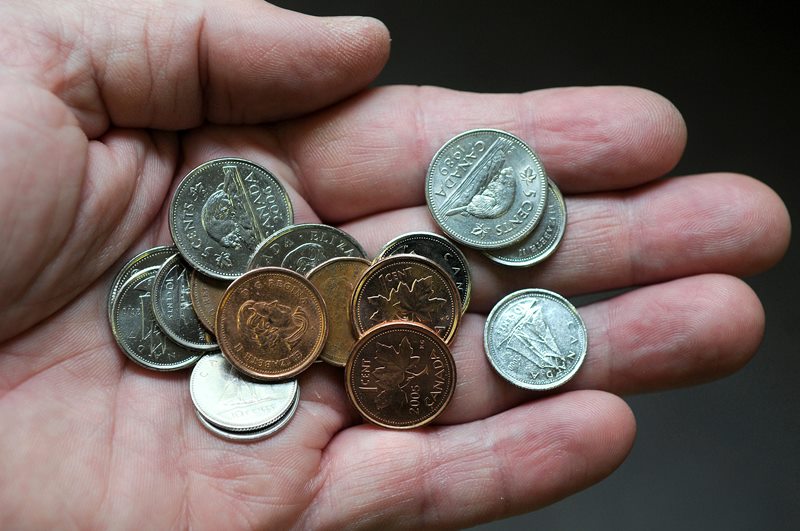Canada should do away with the nickel within the next five years and move to 10-, 20-, and 50-cent coins, a new report from Desjardins said Tuesday.

The Quebec-based financial services company said the nickel should go the way of the penny, which the federal government abolished in its 2012 budget.
Desjardins economist Hendrix Vachon writes that he sees the transition happening “within about five years.”
“Due to the gradual increase in the cost of living and decreased buying power of small coins, the time will come when the nickel will have to be taken out of circulation,” Vachon wrote.
READ MORE: Loonie rises to highest level of 2016 as oil prices also climb
The report said the change would also require removing the 25-cent piece and introducing 20-cent and 50-cent pieces.
“We removed the penny, because the cost over time increased and increased and eventually reached a point where its cost was higher than its benefit for society,” Vachon told Global News. “The same future is expected for the nickel.
Eventually the cost of manipulating nickels, transporting, and accounting for nickels will be too high for its benefit for society.”
The nickel isn’t the only currency in the bank’s sights.
READ MORE: Why a rising loonie could mean a shrinking grocery bill
A 2008 study from Desjardins suggested getting rid of the $5 bill in favour of a coin, but now the group says Canada’s switch to the new polymer bills has changed that.
“The shift from paper to polymer bills lessens the need for this change, as it has substantially increased the lifespan of the notes,” Desjardins said, but “eventually, the evolution of buying power could still justify changing to a $5 coin.”
Will Canada become a cashless society?
Despite other countries like Sweden moving towards a cashless economy, Canada is not likely to follow suit, according the study.
While Bank of Canada data shows Canadians are using cash less often to actually pay for things — down to roughly 44 per cent of all transactions in 2013 – there’s currently $80 billion worth of Canadian coins and bank notes in circulation, and the amount of cash is growing at a pace of between four and seven per cent per year.
Larger denomination bills – like $100- and $50-bills – are becoming more popular, while the $5-, $10- and $20-bills are losing ground.
“These bills are likely little used to purchase goods and services and are more likely used for hoarding purposes,” Vachon wrote.
The study notes that some of the arguments for moving away from cash include combating illegal activity and the underground economy, creating more efficient monetary policy, and reducing transaction costs.




Comments